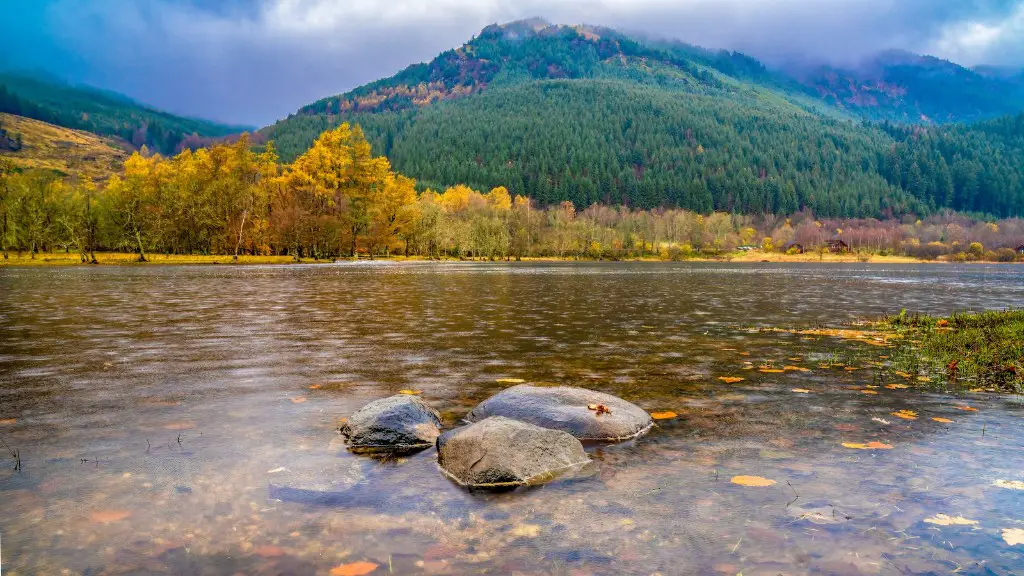The Nile River is a symbol of Egypt and many consider it one of the longest rivers in the world, stretching over 6,853 kilometers (4,258 miles) in length. It is considered one of the key geographical landmarks, with its waters providing a key source of sustenance and livelihood to the people of Egypt. But what is the exact location of the Nile River on a world map?
The Nile River reaches from the equatorial regions in the middle of Africa to the Mediterranean coast in the north. The main source of the river is Lake Victoria in eastern Africa. The river then continues on its journey to the delta located in northern Egypt, before entering the Mediterranean Sea. The Nile Delta is an extremely fertile area, with many crops such as wheat and cotton that are grown just off the Nile’s banks. Because of this, many of the settlements located in this region have been inhabited from ancient times by civilizations that drew their sustenance from the river’s waters.
Egypt is known as the land of the Nile and the two are often linked together. It is a country that has been supported by its rivers for thousands of years, with the annual flooding providing a key source of nourishment to the landscape and its inhabitants. For many, the Nile River represents the survival of Egypt, providing life-giving sustenance and transport to developing civilizations. So, where is the Nile River on a world map? It starts in the equatorial region in the heart of Africa and ends in the Mediterranean Sea.
The Nile has been a crucial source of water for both domestic and agricultural use in Egypt. People have learned to use the river’s waters to irrigate their crops and feed their family for centuries. In addition, the river is one of the major connecting strips for trans-continental trade. It has provided many of the countries along its length with the resources necessary for economic growth and stability.
Apart from the physical use the Nile has provided, it has also been used as a muse for the many religions that have their origin in the region. To this day, it is a source of mystique and inspiration for people from all over the world. From its beginnings in the southern desert to its murky delta, the Nile has managed to remain at the forefront of collective human imagination.
Today, the Nile continues to be a vital source of sustenance and a symbol of strength and power in the region. Its waters provide transport and sustenance to communities along its length and its legacy continues to inspire and enthrall viewers. As you look at a world map and try to locate the Nile River, marvel at the global significance it holds.
Length Of The Nile
The Nile River is considered to be one of the longest in the world. Its length is measured at 6,853 kilometers (4,258 miles), with its main source being located in Lake Victoria in eastern Africa. From there it continues on its path to the Delta located in northern Egypt, before entering the Mediterranean Sea. The Nile is one of the few rivers in the world that can boast of having an uninterrupted source, making it an extremely reliable water source for those who rely on it for sustenance.
Geology & Wildlife Of The Nile
The Nile is home to a vast array of animal and plant life. One of the most common and iconic animals living along its banks is the hippopotamus. There are also numerous species of fish, reptiles, and birds that thrive in the river. An extensive variety of mammals and insects are also found in the surrounding lands. Additionally, the Nile is home to some of the oldest civilizations known to man, with settlements along the banks dating back thousands of years.
Cultural Significance Of The Nile
The cultural significance of the Nile River cannot be overstated. It has been a source of inspiration and landmark for countless stories, songs, and ceremonies. The Ancient Egyptians believed the river was the source of all life, and many spiritual ceremonies and worship were conducted around the waters, with many Pharaohs choosing to be buried close by. The river is, and has always been, of great importance to the people of the region and is believed to carry with it the spiritual essence of life.
Pollution Of The Nile
Although the Nile can boast a long and culturally significant history, it also must bear witness to a loss of biodiversity in the modern world. The river continues to suffer from pollution due to the dumping of industrial and agricultural byproducts. As well, the construction of hydroelectric dams has had a major impact on the water levels, restricting the flow of water and leading to the loss of many species of fish and other creatures. The river’s health has also been further weakened by deforestation, with the cutting down of trees leading to soil erosion and the degradation of the surrounding land.


